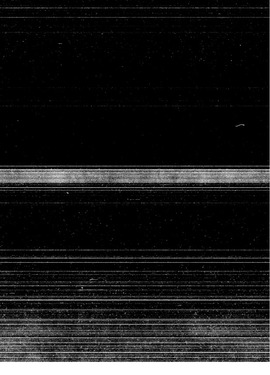| dc.contributor.author | Snow, Jonathan Emil, | en_US |
| dc.date.accessioned | 2013-08-16T12:29:15Z | |
| dc.date.available | 2013-08-16T12:29:15Z | |
| dc.date.issued | 1984 | en_US |
| dc.identifier.uri | https://hdl.handle.net/11244/5274 | |
| dc.description.abstract | A foraging model that predicts the net energy intake for juvenile turtles feeding on a range of Callibaetis nymph sizes is also examined. Those nymph sizes that miximize the net energy intake in the model are considered against nymph sizes in actual diets of four turtle size classes (C. picta and C. scripta hatchlings and yearlings). Search, pursuit, and handling times, and capture probabilities of different-size Callibaetis nymphs were measured in laboratory experiments. Regression equations, based on these measurements, were used to derive estimates of the model parameters. C. picta and C. scripta were not statistically different in search, pursuit, and handling times, nor in capture probabilities. Consequently, data from both species were pooled. The model predicts that diets that maximize net energy intake will overlap considerably among the turtle size-classes considered. But, small turtles should select slightly smaller nymph sizes than larger turtles. The breadth of prey sizes eaten should be narrower than the breadth of available prey sizes for each turtle size considered. Diets of turtles feeding under the same resource regime considered in the model are qualitatively similar to predictions. | en_US |
| dc.description.abstract | The enclosure contained two distinct habitats: an open area dominated by the submergent plant Najas and an area dominated by cattails (Typha). C. scripta were hand caught more often in the Typha stand than in the open Najas habitat. C. picta captures were distributed throughout the enclosure. | en_US |
| dc.description.abstract | Diet and habitat distributions of hatchling and yearling painted (Chrysemys picta) and red-eared (C. scripta) turtles are examined to detect phylogenetic and ontogenetic variations. Young turtles, hatched from eggs incubated in the laboratory, were released into a large pond-enclosure, recaptured at a later date, and stomach contents analyzed. Diet breadth, overlap, and selectivity indices were calculated. Overlap values in this study reflect the general similarity in diets across an extensive array of food categories. A consequence is that interspecific overlap values are statistically indistinguishable from complete dietary overlap despite notable differences in consumption of some major food categories (e.g., C. scripta ate plant matter while C. picta did not feed upon vegetation). Intraspecific (hatchling vs. yearling) overlap values were also indistinguishable from complete overlap. However, prey size appears correlated with juvenile turtle size, and negates the likelihood of a complete diet overlap between hatchlings and yearlings. Measures of diet breadth suggested diverse and non-random feeding. | en_US |
| dc.format.extent | vi, 108 leaves : | en_US |
| dc.subject | Biology, Ecology. | en_US |
| dc.title | Feeding ecology of juvenile turtles (Chrysemys) under experimental conditions / | en_US |
| dc.type | Thesis | en_US |
| dc.thesis.degree | Ph.D. | en_US |
| dc.thesis.degreeDiscipline | Department of Biology | en_US |
| dc.note | Source: Dissertation Abstracts International, Volume: 45-07, Section: B, page: 2028. | en_US |
| ou.identifier | (UMI)AAI8423998 | en_US |
| ou.group | College of Arts and Sciences::Department of Biology | |
